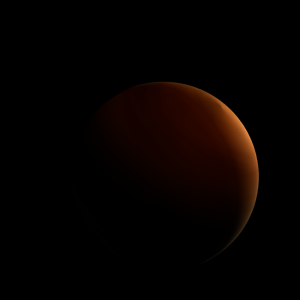|
|
Space Astro
|
Info for exoplanet "Nispamab"
| Scientific (actual) data |
|---|
| Name | JW 801 b |
| Planet status | Confirmed |
| Planet mass | 25.27 |
| Semi major axis | 666.2 |
| Angular distance | 1.59 |
| Discovered | 2020 |
| Updated | 2025-09-01 |
| Publication | Published in a refereed paper |
| Detection type | Imaging |
| Mass measurement type | Spectrum |
| Alternate names | 2MASS J05352657-0517530 b |
| Star name | JW 801 |
| Right ascension | 83.86° |
| Declination | -5.3° |
| Mag v | 20.7 |
| Star distance | 418.6 |
| Star mass | 0.25 |
| Star radius | 1.9 |
| Star sp type | M3 |
| Star age | 0.001 |
| Star temperature | 3239 |
| Star alternate names | 2MASS J05352657-0517530 |
| Wikipedia article | JW 801 b |
Back
| |
| Fictional info (?) |
|---|
| Suggested name | Nispamab |
| Planet type | Huge cold gas giant |
| A prominent result is the "great blue spot", a giant storm that is known to have existed for centuries since it was first detected by scanner. |
| Atmosphere | Argon | 52% |
| Hydrogen chloride | 48% |
| Atmospheric pressure | 50 bar |
 |
| Moon | Ansida | Huge round gaseous asteroid |
| Artiatrin-briel | Medium-sized almost round crater-filled comet |
| Iditea-thala | Huge round rocky moon |
| Google search for Nispamab |
|
Website by Joachim Michaelis
|
|
|
|